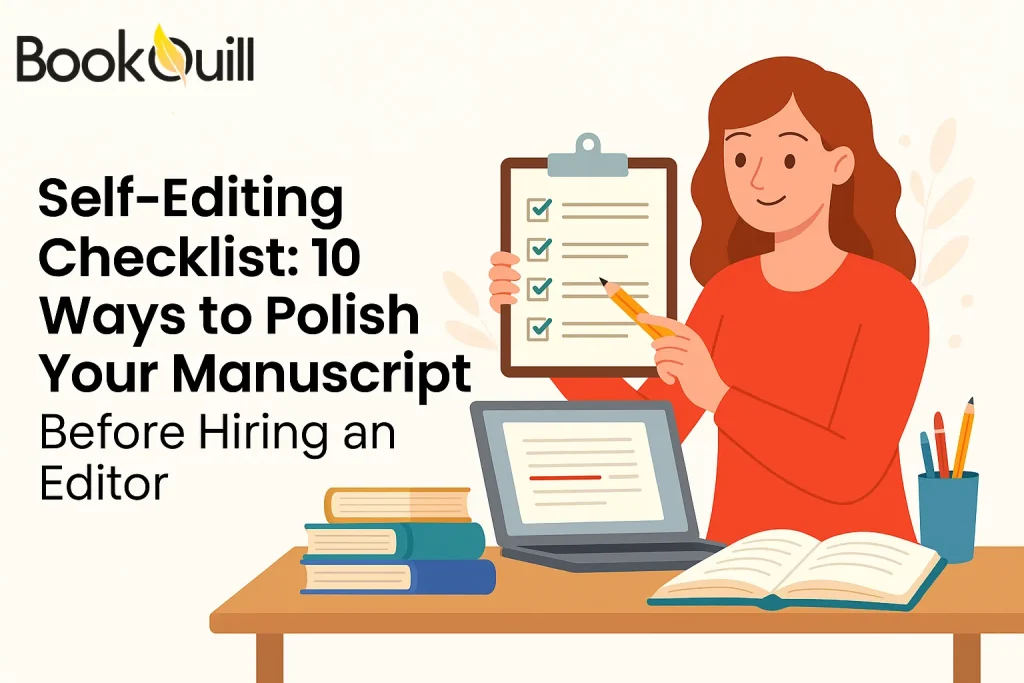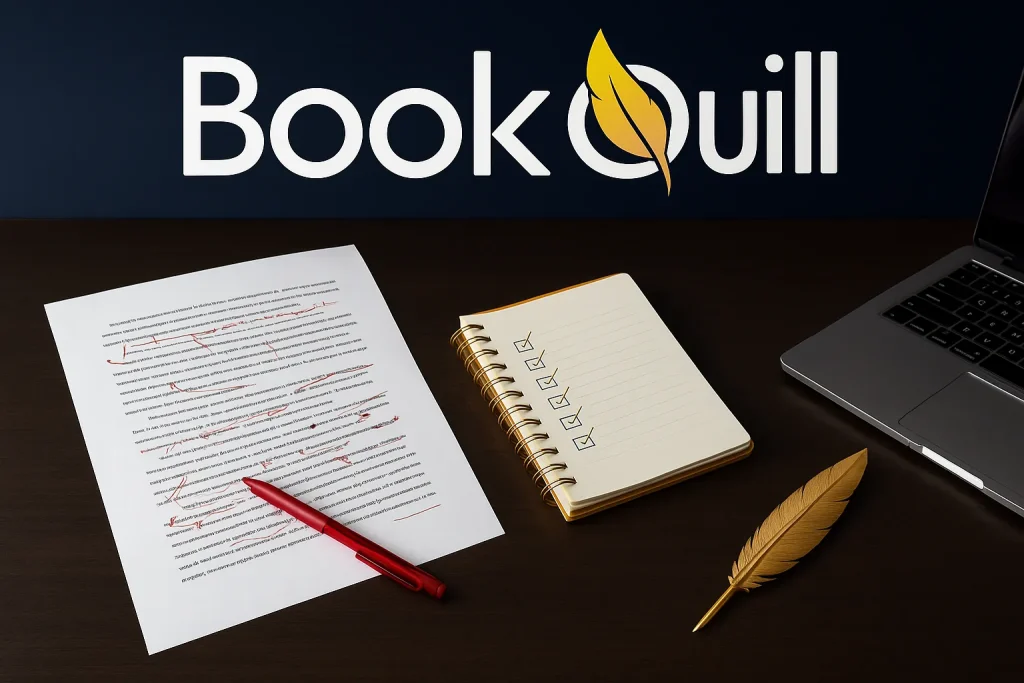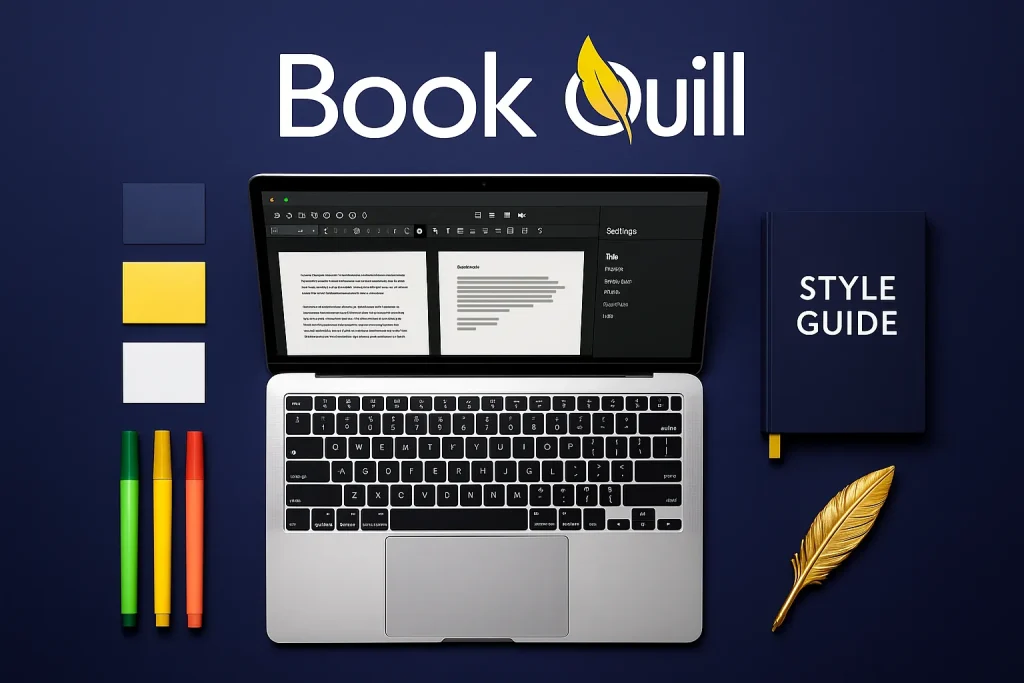Table of Contents
Explore Blogs
Trending on Ebook
Self-Editing Checklist: 10 Ways to Polish Your Manuscript Before Hiring an Editor

So, you’ve finished your manuscript, great! That’s a huge step, and you should take a moment to celebrate. But before you show it to anyone or send it to an editor, there’s one more thing to do: use a self-editing checklist. Think of it as giving your draft a quick clean before inviting guests over.
This checklist won’t replace an editor, but it will help you spot mistakes, polish your writing, and get your book in better shape. In the next sections, I’ll show you simple, practical steps that are easy to follow. By the end, you’ll know exactly what to fix before handing your manuscript to affordable book editing services.
Key Takeaways
- Make sure your story has a clear beginning, middle, and end.
- Your characters should act and speak in ways that feel real.
- Cut out words that don’t add meaning to your sentences.
- Use short, clear sentences that are easy to understand.
- Fix small errors to make your writing clean and professional.
- Write conversations that sound natural and move the story forward.
- Use the same spelling, tense, and formatting throughout your book.
- Let readers feel the moment through actions, not plain statements.
- Reading out loud helps you catch mistakes you might skip silently.
- Step away and come back later to see your draft with fresh eyes.
Why it Matters
It Makes the Editor’s Job Easier
Self-editing is like a warm-up before the real workout. When you clean up your draft, the editor doesn’t have to waste time fixing little mistakes. They can spend more time on the big stuff, like:
- Story flow
- Clarity
- Storytelling
It Can Save You Money
Editors often charge by the word or hour. If your draft is already clean, they won’t need as much time to fix it. This will help you to pay less for professional book editing.
It Makes You a Better Writer
Every time you review your book, you’ll notice patterns in your mistakes. Maybe you use the same word too often or switch tenses (without meaning to). Catching these on your own helps you learn, so each new draft you write will be stronger and cleaner from the start.
Self-Editing Checklist: 10 Must-Do Edits Before Professional Review

1. Check Your Story Structure
Every story needs a strong backbone, that’s your structure. If it’s weak, no amount of grammar fixes will save the book.
Ask yourself simple questions:
- Does my story have a clear beginning, middle, and end?
- Do chapters flow into each other, or do they feel disconnected?
- Are there scenes that don’t move the plot forward or show something new about my characters?
A Quick Way to Test This!
Write a one-sentence summary of each chapter. Then read them in order. Do they build toward the climax naturally, or does the story slow down in places?
You can take inspiration from some bestselling novels like “The Hunger Games” or “Harry Potter and the Sorcerer’s Stone.” They follow a classic “three-act structure”:
- Beginning (setup)
- Middle (conflict)
- End (resolution)
Make sure your story keeps moving. If the beginning drags, many readers will lose interest within the first 50 pages. Keep the pace strong so they stay hooked.
2. Make Your Characters Stronger
Readers don’t just enjoy the story; they care about the characters. If your characters seem boring, fake, or don’t act clearly, people might stop reading. This step of the self-editing checklist will help you ensure your characters feel real and interesting. Always check:
- Do my characters have clear goals and reasons for what they do?
- Do they grow or change during the story?
- Do their actions match who they are?
For example, if a shy character suddenly gives a big, confident speech without any lead-up, it won’t feel right. Small things like that can pull readers out of the story.
Here’s a helpful tip for that:
Make a “Character Resume” for each main character. Write down their fears, dreams, habits, and even weird little traits. This helps you keep them consistent throughout the whole book.
Did You Know?
Readers connect more with characters who feel real and make believable choices.
Also, check how your characters talk. Do they each have their own way of speaking, or do they all sound the same? Read their conversations out loud, and you’ll quickly notice if something feels off.
3. Remove Unnecessary Words
One easy part of the self-editing checklist is to improve your writing by removing additional words (that you don’t need). When you reread the draft, you’ll see words that don’t add value. These extra words sneak in while we write, but they make our sentences weaker.
Some common ones to look out for:
- “just”
- “really”
- “actually”
- “suddenly”
- “very”
For example:
- “She just wanted to say something.” → “She wanted to say something.”
- “He was very tired.” → “He was exhausted.”
See how the shorter versions sound stronger? That’s what you want in your story.
Cutting extra words also makes your writing easier to read and keeps the readers interested longer.
Helpful Tip
Read your story out loud. If a sentence sounds too long or awkward, try shortening it. You can also highlight words you use too much, like “smiled,” “looked,” or “turned.” You might be using them more than you think.
4. Simplify Complex Sentences
Long or fancy sentences can sound smart, but they often confuse readers. Simple, clear writing is usually stronger. If a sentence is too long or has too many parts, people can lose track of what it’s saying.
Here’s an example:
- Long version: “Because she was tired after a long day at work, and since the rain was pouring outside, making the roads slippery, she decided it was best to stay home and rest.”
- Simple version: “She was tired after work, and the rain made the roads unsafe, so she stayed home.”
Both say the same thing, but the second one is easier to read.
If you’re wondering how to edit your book for clarity, try these three tips:
- Use active voice. Say “He wrote the letter,” not “The letter was written by him.”
- Cut extra words. Use “because,” not “due to the fact that.”
- Stick to one idea per sentence.
Simple writing doesn’t mean “dumbed down.” It shows respect for your reader’s time. Most adults read best at an 8th-grade level, so clear writing helps more people enjoy your story.
5. Check Your Grammar and Punctuation
Even if your story is creative, grammar mistakes and wrong punctuation can make it hard to read. These small errors pull the reader out of the story.
Editors will help fix these things, but if you take care of the basics first, your book will look more polished.
Here are some common grammar mistakes to check:
- Commas in the wrong place
❌ “I went to the store, I bought apples.”
✅ “I went to the store, and I bought apples.”
- Wrong subject and verb match
❌ “The list of items is long.”
✅ “The list of items is long.”
- Missing or wrong apostrophes
❌ “Its a great day.”
✅ “It’s a great day.”
You can also use free tools to catch simple errors, but they don’t always understand the meaning, so double-check their suggestions.
6. Keep an Eye on Dialogue
The next thing on our self-editing checklist is dialogue. A good one brings your characters to life. But writing natural conversations isn’t always easy. If it sounds stiff or fake, readers may lose interest fast.
Ask yourself these questions when checking your dialogue:
- Does it sound like something a real person would say?
- Does each character speak differently, or do they all sound the same?
- Does the conversation help move the story forward, or is it just there to fill space?
Here’s an example:
- Unnatural: “Hello, brother. How was your day at the factory where you work as a mechanic?”
- Natural: “Rough day at the shop?”
The second version sounds more real and still gives the same info.
Avoid using dialogue to explain everything. If a character starts giving long speeches about backstory, it feels forced. Instead, details should be given naturally through their actions and short conversations.
7. Be Consistent
Readers notice when things don’t match. If a character’s name changes halfway through the book, or a location is described differently in two chapters, it can confuse them – and make your story feel messy.
Consistency isn’t just about names. It also includes:
- Spelling: Pick one style – like “color” or “colour”– and use it the same way throughout.
- Tense: Don’t jump between past and present unless you have a good reason.
- Formatting: Keep your chapter titles, spacing, and layout the same from start to finish.
The Trick: Style Sheet
A great way to edit your book for consistency is by making a simple “style sheet.” This is a document where you note things like character names, locations, timelines, and how you spell certain words. Editors use this trick – and so can you.
Before sending your book to an editor, do a full read just to check for consistency. You’ll often find small mistakes you didn’t notice before. It might not seem like a big deal, but staying consistent makes your book feel clean, clear, and professional.
8. Show, Don’t Tell
One of the key steps in your Self-Editing Checklist is learning to show, not just tell.
When you tell, you give the reader information. But when you show, you let them feel what’s happening. Showing brings the scene to life and makes it more interesting.
Here’s a quick example:
- Telling: “She was nervous.”
- Showing: “Her hands shook as she smoothed her dress, and she avoided his eyes.”
The second version helps the reader picture what’s going on and feel the emotion, without saying it directly.
Showing doesn’t mean writing pages of detail. It just means using small hints, like body language, senses, or actions.
For example:
❌ “The coffee was hot.”
✅ “Steam curled from the mug, warming her palms.”
See how a simple change makes the sentence more vivid?
When you’re editing your book, look for places where you’re just stating facts. Ask yourself, “Can I show this instead?” Even changing a few lines can make your story feel more real.
Did You Know?
Readers connect more emotionally with characters when they can picture actions and feelings, not just read facts.
As you go through your draft, highlight places where you’re telling. Ask yourself, “Can I show this instead?” Even a few small fixes can make your story much stronger.
9. Read It Aloud
One of the easiest self-editing tricks is to use your voice. Reading your book out loud helps you catch things you might miss when reading in your head.
When you read aloud, you’ll notice:
- Sentences that feel too long
- Dialogue that sounds stiff or fake
- Words that repeat or feel awkward
For example, this line might look okay on the page:
“He quickly walked across the room in a hurried manner.”
But when you say it out loud, it feels clunky. A smoother version would be:
“He hurried across the room.”
Reading out loud also helps with rhythm. Good writing has a natural flow. If it feels heavy or hard to say, it might feel the same way for your reader.
You can also use free text-to-speech tools to hear your writing. This gives you a fresh view before sending your draft to affordable writing editing services for a final polish.
10. Take a Break, Then Review Again
After spending a lot of time writing and editing, your brain gets too used to the words. You start to miss small mistakes because you already know what you meant to say. That’s why taking a break is one of the best editing tips out there.
Step away from your book for a few days or even a week (if you can). When you come back, you’ll see it with fresh eyes.
- Sentences that seemed fine before might now sound awkward.
- Mistakes you didn’t notice earlier.
For example, author Stephen King recommends putting your draft aside for six weeks. You don’t have to wait that long, but even a short break can help.
A simple way to do this:
When you return, change how you read your draft. Try either:
- Print it out
- Use a different font
- Read it on a tablet
Seeing it in a new way tricks your brain into noticing problems you missed.
After this final review, you’ll know you’ve done your best. That’s when it’s a good time to send it to one of the top book editing services to give it a professional finish.
Tools and Resources to Help You Self-Edit
It’s really time-consuming to mark all the checks on the self-editing checklist manually. So, work smarter, not harder, by using tools!
There are many tools (some are free) that can help you save time and catch mistakes faster. Think of these tools as extra sets of eyes before you hand your book to an editor.

Here are some that are easy to use:
Grammar Checkers
Free tools like Grammarly or ProWritingAid can spot things like missing commas, repeated words, or basic grammar issues. They’re not perfect, but they’re a great place to start.
Beta Readers
Ask a trusted friend or a writing group to read your draft. They can tell you if the story makes sense or if any characters feel off.
Publishing Tools
Programs like Vellum let you see your book in a real book layout. This helps you spot problems you might miss in a regular document.
After using these tools, you’ll feel more confident about your draft. When you’re ready for the final step, you can look into top book editing companies to give your book a professional finish.
Wrap Up
Self-editing isn’t about making your book perfect. It’s about getting it ready for the next step. By using this Self-Editing Checklist, you’ll find and fix mistakes, tighten your writing, and make your story clearer before sending it to an editor.
Every step you take now shows how much you care about your work. It also saves time – and often money – when you finally hire a professional. Remember, professional book editing services are there to improve your story, not fix things you could’ve handled.
So, take a short break, open your checklist, and give your book one last look. You’ve already done the hard part, writing it. Now it’s time to make sure it’s ready to go out into the world and reach your readers.
Frequently Asked Questions
What’s the best file format to send to an editor?
Most editors prefer Word documents (.doc or .docx) because they can use Track Changes. Some also accept Google Docs for real-time edits.
Can I use AI tools to help edit my book?
Yes, AI tools can help fix grammar and suggest changes. However, they don’t show feedback about tone, emotion, or storytelling.
Do I need different edits for fiction and nonfiction?
Yes. Fiction focuses more on story flow, characters, and dialogue. Nonfiction needs clarity, structure, and accuracy. The editing approach should match your genre.
How early should I book affordable professional editing services?
Try to book at least a few weeks (or even months) in advance. Good editors, even affordable ones, often fill their calendars fast.
Note: Some links in this post are affiliate links. If you buy through them, we may earn a small commission, at no extra cost to you. We only suggest tools we trust and find useful. Thanks for your support!
About Author
Hi My name is Micheal Adams, When I am not watching horror movies and helping my kids with homework or reading my favorite fantasy/supernatural novels – I’m writing to guide aspiring authors. I focus on exploring and simplifying both the technical aspects and the often-overlooked details of book writing and publishing so I can empower new writers to climb the Amazon bestseller list and connect with more readers.




